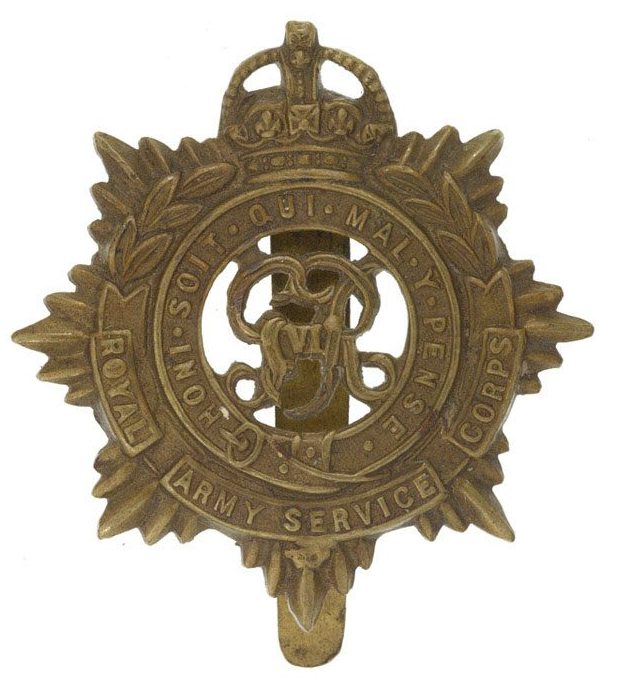Personal Details
Born: 2 March 1897 Blackpool, Lancashire and baptised 7 April the same year in Blackpool.
Family: He was the son of George Nutter a hotel keeper, and his wife Sarah. He married Mary L Jennings in 1926 in Hendon. The couple had one child, Denis M born in Lambeth, London in 1928.
Residence: At the time of his baptism his family were living at 45 Church Street, Blackpool but by 1901 they had moved to The Miller Arms, Singleton, Fylde, Lancashire. In 1911 was a pupil on a farm in Lacon, Prees, Shropshire. His father at this time was the hotel keeper of The Fox and Goose Hotel, Green End, Whitchurch. This was the address given for Frederick on the 1919 Absent Voters` List. By 1939 and married he was living at Cablecot, Ripley Road, Twickenham, Middlesex.
Employment: In 1939 he was a motor mechanic.
Died: In 1959 in Middlesex, aged 62.
Military Details
Regiment: Royal Army Service Corps (previously King’s Shropshire Light Infantry, Labour Corps and King’s Shropshire Light Infantry)
Rank: Private
Service Number: M/31957 (previously 8198, 486707 and 6649)
Date of Enlistment: Not known
Date of Discharge: 15 January 1920
Reason for Discharge: Demobilisation
Frederick was awarded the Campaign Medals (1915 Star, British War Medal, and Victory Medal). It appears his medals were returned and reissued in November 1932.

The 1914 Star (also known as 'Pip') was authorised under Special Army Order no. 350 in November 1917 and by an Admiralty Fleet Order in 1918, for award to officers and men of the British and Indian Expeditionary Forces who served in France or Belgium between 5 August and midnight of 22–23 November 1914. The former date is the day after Britain's declaration of war against the Central Powers, and the closing date marks the end of the First Battle of Ypres.
The 1914–15 Star (also known as 'Pip') was instituted in December 1918 and was awarded to officers and men of British and Imperial forces who served against the Central European Powers in any theatre of the Great War between 5 August 1914 and 31 December 1915. The period of eligibility was prior to the introduction of the Military Service Act 1916, which instituted conscription in Britain.
The British War Medal (also known as 'Squeak') was a silver or bronze medal awarded to officers and men of the British and Imperial Forces who either entered a theatre of war or entered service overseas between 5th August 1914 and 11th November 1918 inclusive. This was later extended to services in Russia, Siberia and some other areas in 1919 and 1920. Approximately 6.5 million British War Medals were issued. Approximately 6.4 million of these were the silver versions of this medal. Around 110,000 of a bronze version were issued mainly to Chinese, Maltese and Indian Labour Corps. The front (obv or obverse) of the medal depicts the head of George V. The recipient's service number, rank, name and unit was impressed on the rim.
The Allied Victory Medal (also known as 'Wilfred') was issued by each of the allies. It was decided that each of the allies should each issue their own bronze victory medal with a similar design, similar equivalent wording and identical ribbon. The British medal was designed by W. McMillan. The front depicts a winged classical figure representing victory. Approximately 5.7 million victory medals were issued. Interestingly, eligibility for this medal was more restrictive and not everyone who received the British War Medal ('Squeak') also received the Victory Medal ('Wilfred'). However, in general, all recipients of 'Wilfred' also received 'Squeak' and all recipients of The 1914 Star or The 1914/1915 Star (also known as 'Pip') also received both 'Squeak' and 'Wilfred'. The recipient's service number, rank, name and unit was impressed on the rim.

